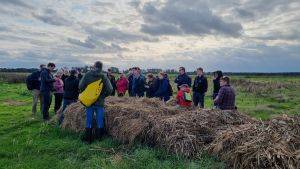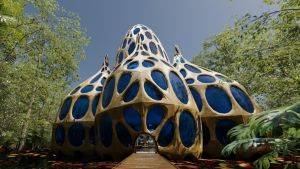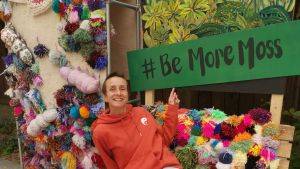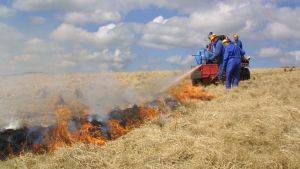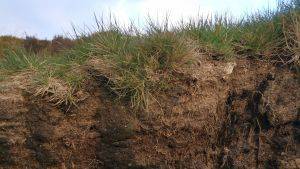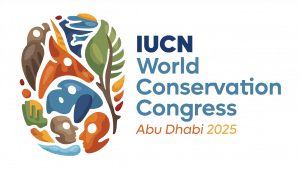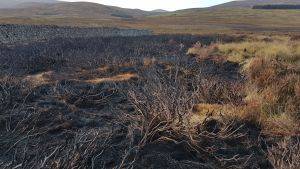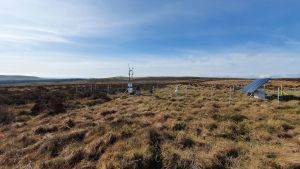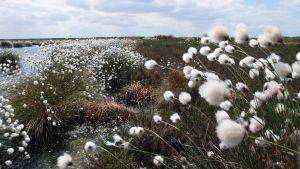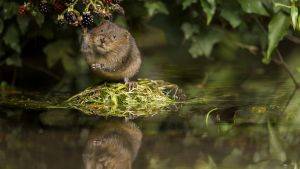Meathop Moss
Restoration Delivered
Restoration activities carried out by Cumbria Wildlife Trust and Natural England have included:
- Removal of conifer trees from around the edges to prevent drying of the peat
- Drain blocking using an excavator
- Creation of small, low bunds to retain water on the bog
Rising water levels and access for work has meant the Cumbria Wildlife Trust has had to move sections of the boardwalk, and the original access route onto the bog is now unusable. Temporary access has therefore been installed, with plans to create and install new access routes, walkways and signage.
Site Activity
Management at Meathop Moss is aimed at retaining as much water as possible on the bog, to enable peat formation. This has involved removing trees and blocking drainage ditches. Cumbria Wildlife Trust has also purchased adjacent farmland and raised water levels there.
Biodiversity
Sphagnum mosses, cotton grass, bog rosemary, bog asphodel, cross-leaved heath and sundew are all found on Meathop Moss.
Come May and early June, green hairstreak butterflies and emperor moths can be seen. The uncommon large heath butterfly is also found late June to early August. Northern eggar moth is also active at this time. Other invertebrates include bog bush cricket and a variety of dragonflies and damselflies.
Snipe,stonechat and tree pipit are often seen. Red and roe deer, and adder are also present.
Project Name: Meathop Moss
Organisation / Lead partner: Cumbria Wildlife Trust
Location: Witherslack, Cumbria
Approximate area covered: 82 ha
Conservation Status: Site of Special Scientific Interest (SSSI), Special Area of Conservation (SAC), Nature Reserve (NR), National Park (NP)
Predominately: Lowland
Peat Habitats: Lowland raised bog
Project Type: Restoration, Management
Year Project Began: 1998

